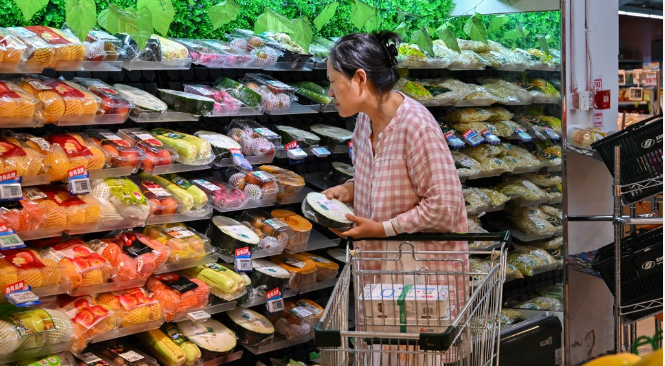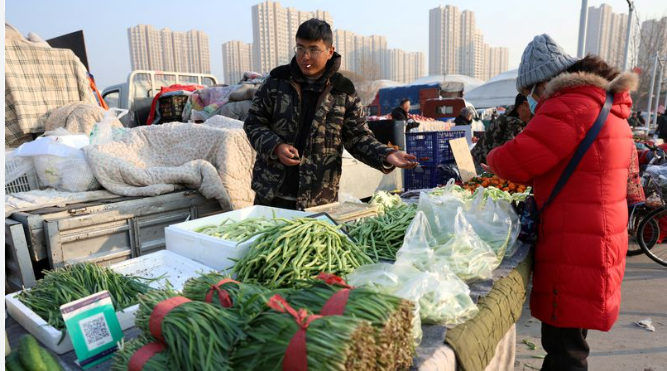1. Introduction: China’s Slowdown in Consumer Price Growth
China’s economic landscape is currently marked by slow consumer price growth and a deepening producer price deflation, despite significant governmental stimulus efforts. In October, China’s consumer prices saw the slowest rate of increase in four months. This lack of momentum highlights the ongoing challenges in China’s economy, as well as the struggle to stimulate consumer demand and improve inflationary trends in the short term. A newly introduced 10 trillion yuan (or $1.4 trillion) package aims to alleviate hidden debt burdens on local governments, yet experts are cautious about its impact on the country’s broader economic revival.
2. Factors Contributing to the Sluggish Consumer Price Growth
Several key factors have contributed to the recent slowdown in China’s consumer price growth, creating obstacles to more robust economic performance:
- Reduced Consumer Spending: The Chinese economy has faced reduced domestic consumption as citizens are cautious with spending amid economic uncertainties, and inflation remains low.
- Impact of Global Economic Trends: As a major global economy, China’s consumer prices are also influenced by international factors such as global inflation rates, trade policies, and supply chain disruptions.
- Weak Real Estate Market: The real estate sector in China has traditionally been a significant economic driver. However, recent turmoil and defaults have contributed to economic strain and reduced consumer confidence.
 for more information click on this link
for more information click on this link
3. Impact of Producer Price Deflation on Economic Recovery
Producer price deflation deepened in October, adding another layer of complexity to China’s economic landscape. Producer prices—measuring the cost of goods at the factory gate—often serve as an early indicator of economic health. When these prices decline, it indicates weaker demand for goods, leading companies to reduce production costs and, potentially, wages or jobs. Key aspects of producer price deflation include:
- Lower Industrial Output: Sectors such as manufacturing, construction, and industrial production have seen reduced output as demand remains subdued.
- Supply Chain Adjustments: The producer price deflation can also be partly attributed to adjustments in supply chains due to lower demand, which has led to reduced prices for raw materials and intermediate goods.
- Weak Export Demand: China’s exports have faced challenges, affecting producer prices and forcing companies to focus on cost-cutting rather than expansion.
4. Government’s 10 Trillion Yuan Stimulus Package
In response to these economic challenges, China recently introduced a 10 trillion yuan ($1.4 trillion) stimulus package. This financial aid is designed to address hidden debts within local governments, which have been accumulating due to years of infrastructure investment and real estate development projects.
- Targeted Relief for Local Governments: The stimulus aims to alleviate the financial strain on local authorities, allowing them to manage debt more sustainably.
- Potential for Limited Consumer Impact: Although the package provides relief for government debt, analysts believe it may have limited immediate effects on consumer demand and spending, as the primary focus is debt restructuring rather than direct consumer benefits.
5. Economic Stimulus and Its Short-Term Impact on Demand
The immediate impact of the 10 trillion yuan package on consumer demand may be limited, as analysts suggest the measures are more focused on stabilizing financial conditions than on driving consumer spending. Key factors include:
- Limited Cash Flow to Consumers: The package’s focus on debt restructuring is unlikely to result in immediate increases in household disposable income, which is essential for driving consumer demand.
- Focus on Debt Over Demand: By targeting debt reduction, the package seeks to enhance financial stability in the long term rather than encouraging consumer spending directly.
6. Challenges for China’s Economic Revival Strategy
The effectiveness of the government’s stimulus package and other economic measures faces several challenges:
- Structural Economic Issues: China’s economy is still grappling with structural challenges, including reliance on exports, regional inequality, and a slow transition to a consumer-driven economy.
- Demographic Pressures: China’s aging population presents long-term concerns, as a shrinking workforce could hinder growth and impact future consumer demand.
- Real Estate Sector Troubles: The real estate market remains fragile due to high levels of debt and defaults among major developers, which affects related sectors and consumer confidence.
7. Global Implications of China’s Economic Trends
China’s economic performance has a significant impact on the global economy due to its role as a major manufacturing hub and trading partner. Slower growth in China can affect international supply chains, commodity prices, and trade patterns. Some global implications include:
- Reduced Demand for Commodities: As China’s economy slows, its demand for raw materials such as oil, iron ore, and copper decreases, affecting global commodity prices.
- Impact on Trade Partners: China’s trading partners, particularly in Asia, Europe, and the United States, may experience lower demand for exports, impacting their own economic growth.
- Potential Shifts in Foreign Investment: Investors may reassess China’s appeal as an investment destination, with some possibly exploring opportunities in other emerging markets.
 for more information click on this link
for more information click on this link
8. Future Outlook: Prospects and Potential Reforms
While the current economic conditions are challenging, there are potential reforms and opportunities for growth:
- Economic Rebalancing: China may seek to accelerate its shift from an investment-driven to a consumer-driven economy, focusing on household consumption.
- Technological Advancements: Investments in innovation, green technology, and digital infrastructure could help stimulate growth in new sectors.
- Increased Focus on Social Services: Expanding healthcare, social security, and education services can reduce household savings and boost consumer spending, helping stimulate the economy.
9. Conclusion: Navigating Economic Uncertainty in China
China’s recent economic data indicates a complex environment, with slower consumer price growth, deepening producer price deflation, and a significant government stimulus package focused on debt relief rather than immediate consumer spending. While the new stimulus package aims to stabilize the economy, its effects on consumer demand and inflation are expected to be gradual. ALSO READ:- Suryakumar”Men in Blue Aim to Extend Dominance Over South Africa: Can Suryakumar & Co. Keep Up the Winning Streak?”




